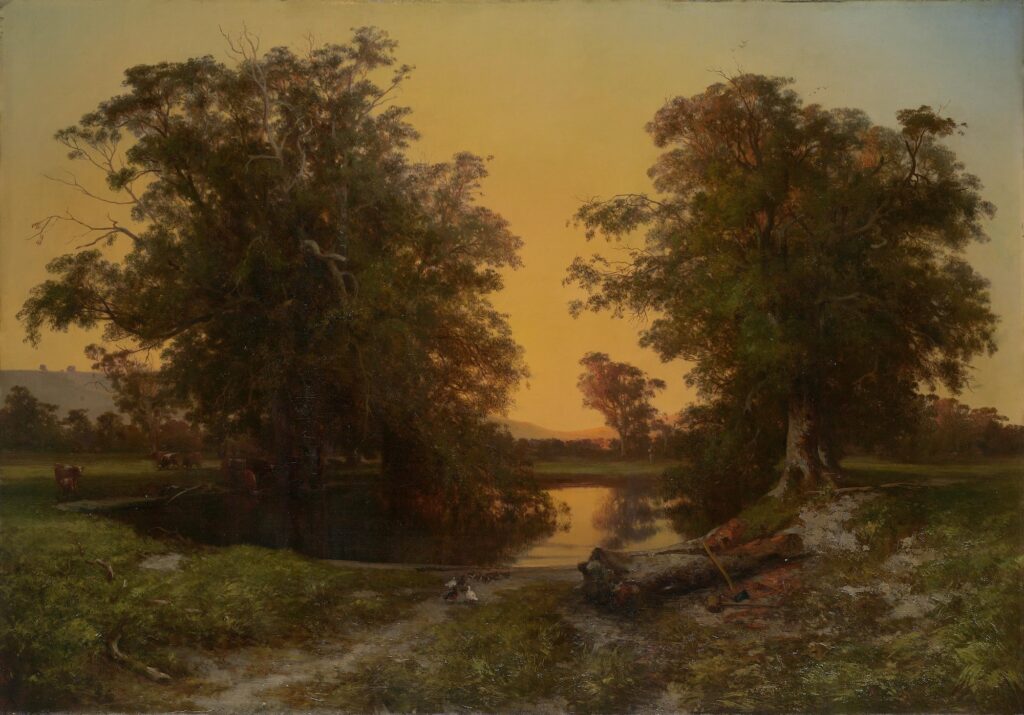Buvelot, Louis (1814-88; Swiss/ Australian)
Waterpool near Coleraine (sunset) 1869
Oil on canvas, 107.4 x 153 cm
Purchased, 1870
National Gallery of Victoria (p.302.11-1)
“What excited his contemporaries about Buvelot’s paintings was his ability to find poetry in the prosaic, transforming the ordinary and accessible, rather than searching out new romantic subjects in the most remote parts of Victoria as Eugene von Guérard and Nicholas Chevalier had done” (Tim Bonyhady).
Works like this, included in the 1869 loan exhibition at the Public Library, certainly proposed a powerful local alternative to hallowed conventions, although novelist Marcus Clarke, writing on the NGV collection in 1874, saw the ancient trees viewed at dusk as prompting “sad reflection [on] the vanished past.” There are also definite echoes here of the 17th-century Dutch landscape style of Hobbema and Jacob van Ruisdael. Remarkably enough, then, Buvelot here forged a powerful amalgam of European realist and Romantic traditions with a new understanding of the distinctive characteristics of the Australian bush.
In the pre-Felton NGV, this picture was contrasted directly to traditional English landscape paintings of the era: see especially Bough Weald of Kent 1857 {1871} NGV [PA] and Creswick & Ansdell England 1850 {1878} NGV [PA].
This painting may also be contrasted with Cole (G.) Hay Waggon 1870 {1870} NGV [PA], a contemporary English landscape also purchased for Melbourne in 1870. Whereas Buvelot discovers in the late afternoon light a deep serenity, Cole’s view of rural toil is not even melancholy, but simply depressing.
Refs.
AR 1870; NGV 1875, p.48; NGV 1894, p.86 (IV.McArthur Gallery, no.46; ill.); NGV 1890, p.96 (III.McArthur Gallery, no.52; ill.) [£131/5]
Tim Bonyhady, The Colonial Earth, Melbourne: Melbourne University Press, 2000, pp. 159ff. (ch.6), esp.pp.160 (quoted) and 255 (quoting Marcus Clarke); see also Downer & Phipps Victorian Vision (1985), cat.65 and p.39
For comparable Dutch 17th-century examples now in the NGV but acquired after 1905, Hobbema’sThe Old Oak and Ruisdael’s The Watermill, see Hoff (1995), pp.157 and 262-3


